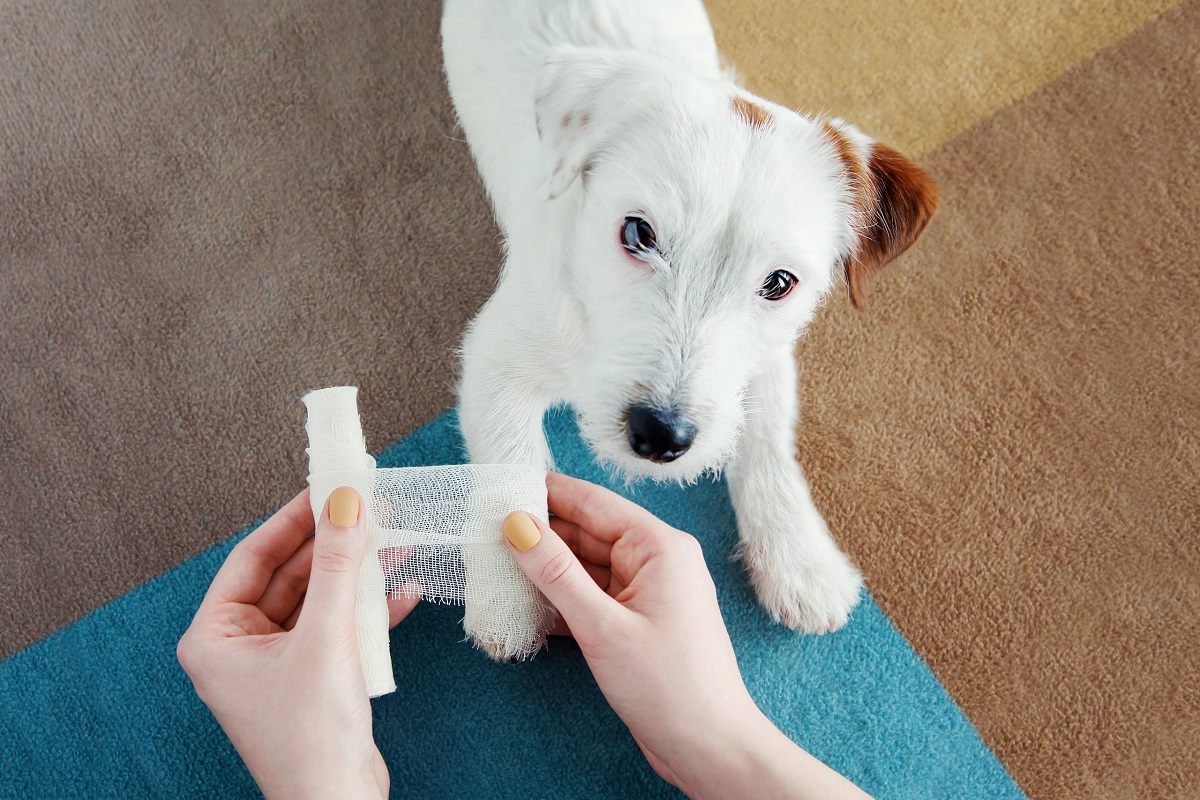
Proper wound care is essential for your pet’s recovery, whether they have experienced an injury or undergone surgery, knowing how to change pet bandages and dressings will help aid your pet’s healing process
Our guide is designed to help you confidently change your pet’s bandages or dressings to ensure your pet is allowed to heal properly. You should always follow the vet’s instructions for your pet’s specific case.
1. Getting started with the right supplies
Some key supplies you will want to gather may include cotton swabs to clean the wound, new bandages or dressings, a clean towel, a bowl of warm water, mild pet-friendly antiseptic, and scissors. You can find these items at reputable online shops.
You should always wash your hands thoroughly with soap before touching your pet’s wounds, and you may also wish to wear disposable gloves. This will help prevent infection.
2. Removing the bandage
Gently unwrap or cut away the old bandage. Some adhesives might stick to your pet’s fur and need to be cut away if tugging at their hair and causing discomfort. If you do need to cut the bandage, be incredibly careful to avoid your pet’s skin, as it will be tender.

3. Monitoring the wound and surrounding area
The wound should get progressively smaller and show new skin growth, which should appear smooth and pink. Signs of swelling, redness, discharge, or an unpleasant smell may indicate infection and pain and delay healing. You should call your vet right away if you notice any of these indications or if the wound is not getting better over time.
4. Cleaning the wound
You should only do this if your vet has advised you to clean the wound. Dampen a clean cloth or disposable cotton swab with warm water and very gently dab the area around the wound to remove any debris. If an antiseptic has been recommended, apply it according to the instructions.

5. Applying the bandage
Once the wound is dry, place the new dressing over the wound, if one is required, then carefully wrap the bandage around it. Make sure the bandage is snug but not too tight as this can cut off circulation. You should be able to slip a finger under the bandage easily.
If your pet seems particularly distressed or uncomfortable, consider whether the bandage is applied too tightly or in an awkward position. If you note swelling around the bandage, that may also be a sign it is too tight.
What about changing bandages out of hours?
Remember, if you have any questions or hesitations about changing your pet’s bandages or dressings, it is always best to contact your vet. Your vet will be able to provide you with further guidance or arrange to change the bandage in person at your local clinic. Your daytime vet will be able to help during their normal opening hours.
If you have any questions about changing pet bandages out of hours, Vets Now’s emergency service is available, and our Video Vets telehealth service is available between 8 am and 11 pm

